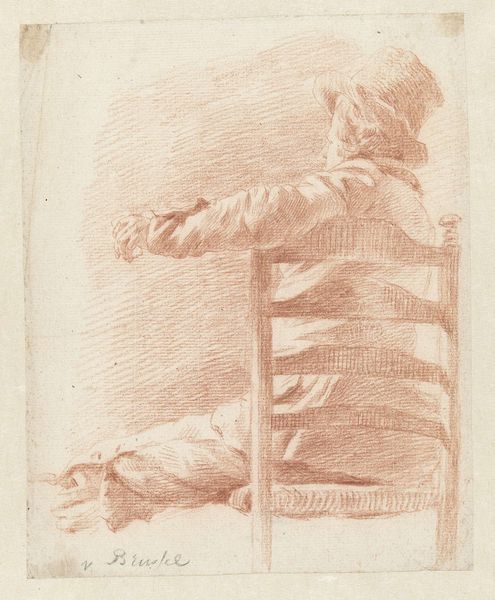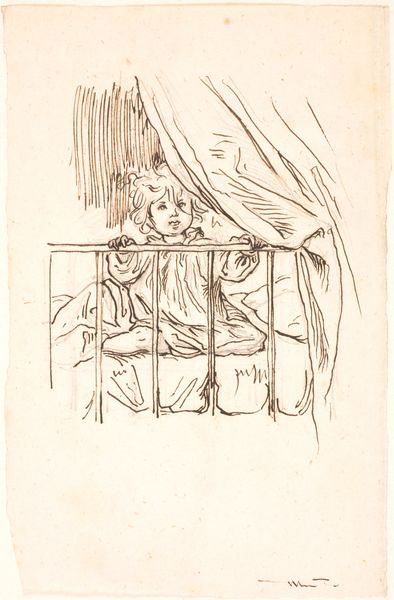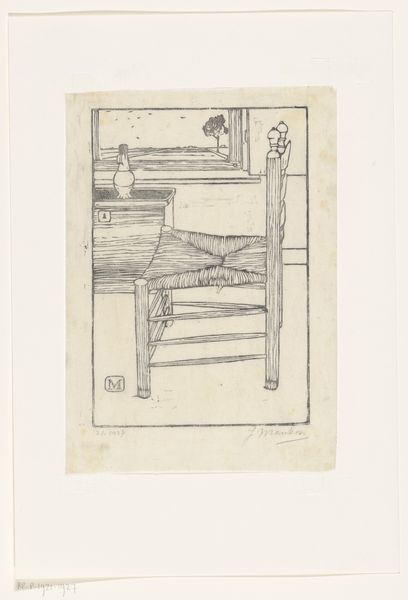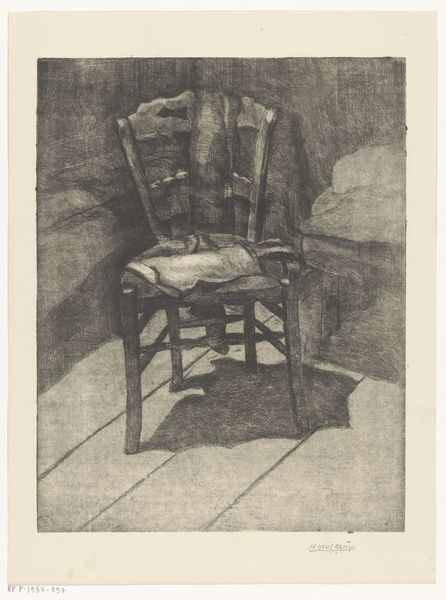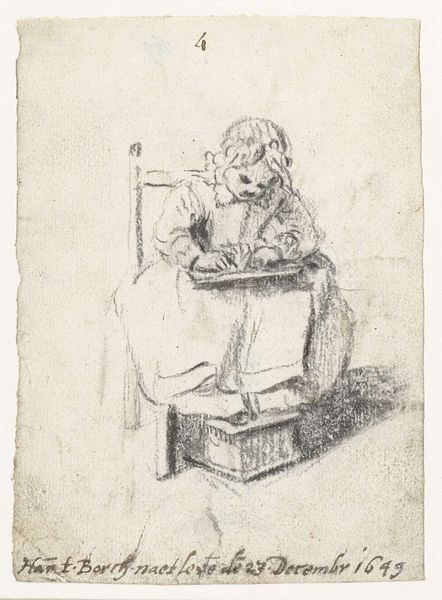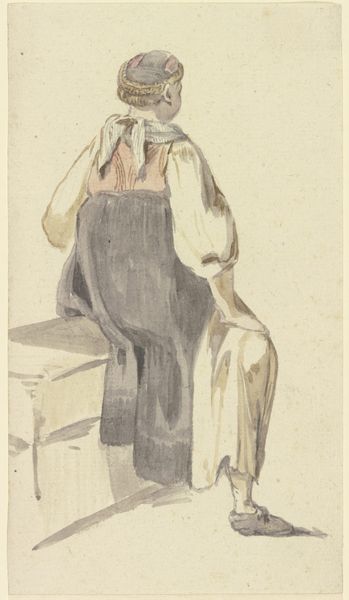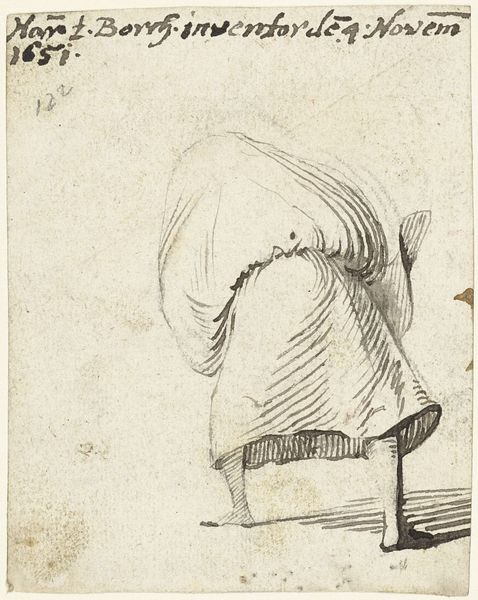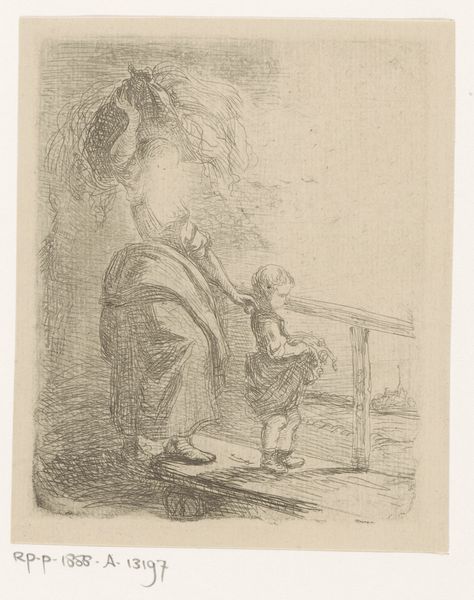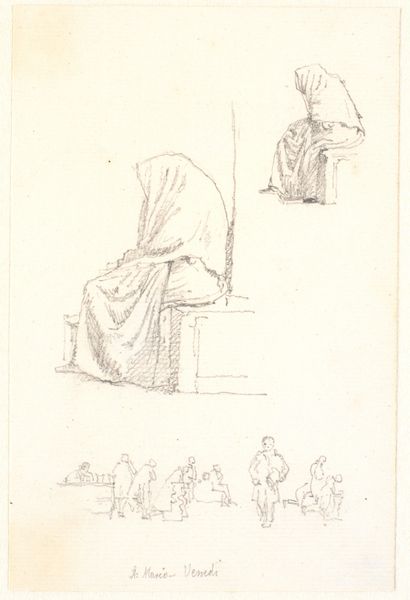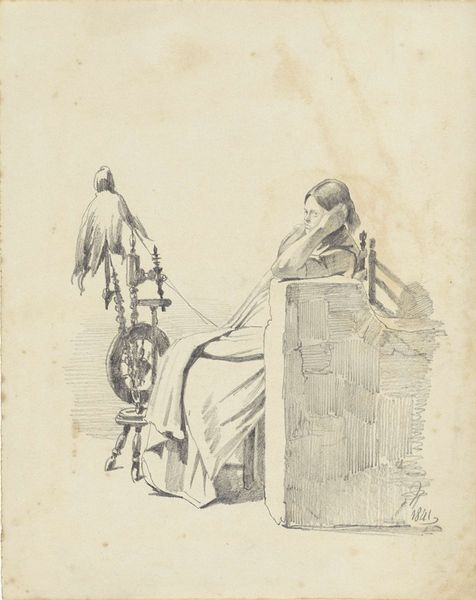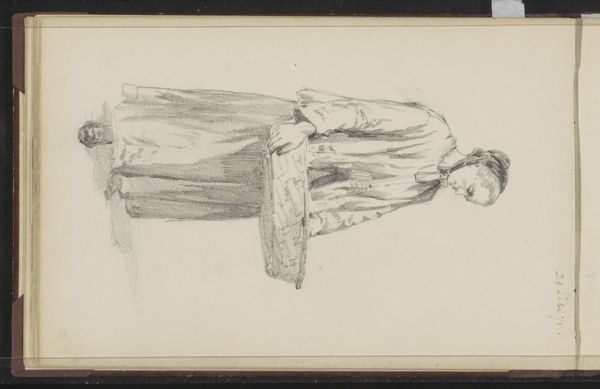
#
amateur sketch
#
toned paper
#
light pencil work
#
quirky sketch
#
pencil sketch
#
sketch book
#
personal sketchbook
#
pen-ink sketch
#
sketchbook drawing
#
sketchbook art
Dimensions: height 120 mm, width 89 mm
Copyright: Rijks Museum: Open Domain
Curator: Harmen ter Borch’s drawing, "Vrouw zittend op een stoel, van achteren," made around 1650, captures a woman seated, viewed from behind. It resides here at the Rijksmuseum. What's your initial response? Editor: There's a wonderful immediacy. The rough, light pencil work has a very intimate, almost voyeuristic feel, like peering into a private moment. Curator: Ter Borch’s approach in this piece really underscores the sketchbook-like quality. The swift lines, the use of toned paper – it emphasizes the preliminary nature of the work. Note how he uses the back of the seated figure to emphasize this spontaneity. Editor: And look how the light and shadow play across the woman's form, defining her posture and clothing with so few strokes. Was he interested in portraiture generally? How might such a personal, fleeting image fit into a broader history of Dutch art? Curator: Ter Borch was indeed an accomplished portraitist. What I appreciate about this particular work is the reductive nature. He uses the line to evoke form, but also to imply a certain social context – this woman, perhaps a servant, depicted without the ornamentation that a formal portrait would demand. Editor: Yes, and perhaps a hint to how society treats marginalized individuals in art, only seeing them as shadows of their labor rather than giving light to who they are. Does the sketch’s unrefined execution then comment on the subject’s own societal status in 17th century Netherlands? Curator: It raises that question, doesn't it? The drawing avoids idealization entirely; this emphasizes a raw reality. The materials – the simplicity of pencil on paper, speak volumes, almost presenting an informal language of observing society at the time. Editor: This quick, insightful capture is definitely about pure artistic intention, the materiality of its creation really underlines it. There’s beauty and a deeper humanity uncovered. Curator: Agreed. It encourages us to consider both the visual and the social, which provides a strong argument for why this seemingly minor work warrants attention today.
Comments
No comments
Be the first to comment and join the conversation on the ultimate creative platform.
